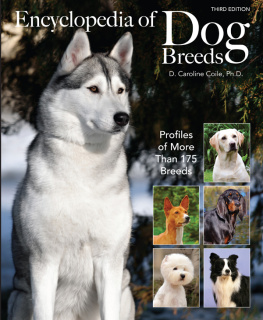Your Ideal Cat
Insights into Breed and
Gender Differences in
Cat Behavior
Your Ideal Cat
Insights into Breed and
Gender Differences in
Cat Behavior
Benjamin L. Hart, DVM, PhD
Lynette A. Hart, PhD
PURDUE UNIVERSITY PRESS
West Lafayette, Indiana
Copyright 2013 by Benjamin L. Hart. All rights reserved.
Printed in the United States of America.
Library of Congress Cataloging-in-Publication Data
Hart, Benjamin L.
Your ideal cat: insights into breed and gender differences in cat behavior / Benjamin L. Hart, DVM, PhD, and Lynette A. Hart, PhD.
pages cm.(New directions in the human-animal bond)
Includes bibliographical references and index.
ISBN 978-1-55753-648-8 (pbk.: alk. paper)ISBN 978-1-61249-255-1 (epdf)ISBN 978-1-61249-256-8 (epub) 1. CatsBehavior. 2. Cat breeds. I. Hart, Lynette A. II. Title.
SF446.5.H373 2013
636.8dc23
2012034713
Cover and interior illustrations by Emma Mooring
Preface
Kittens are such winning creatures that we cant help falling in love with them. But if you are thinking of welcoming a new kitten or cat into your home, do not underestimate the careful consideration needed to make your selection. The kitten you choose today will grow into the cat that could be your companion for the next fifteen to twenty years.
A number of experiences and thoughts come to mind in selecting a kitten. You may have really loved a Siamese you once had, but the vocalization may have been a bit too much, and perhaps he got into urine marking. A cat breeder you know may extol the virtues of the Ragdoll, another popular breed. Your cousin has fallen in love with the wild looks of the Bengal. Can a sampling of friends give you enough information about all of the main breeds of cats? And how can you evaluate the books that discuss the good points of the various breeds? The truth is, no one person can be the sole authority on all breeds. Breeders may have a bias, or at least a loyalty, toward their own breeds. Likewise, authors writing about certain breeds undoubtedly have their own biases.
The purpose of this book is to help you, the prospective kitten or adult cat caregiver (owner), select the breed, or breed type, and genderneutered male or spayed femalebest suited to your personality, other family members, and your environment, whether an apartment, a condominium, or a suburban home. A hastily made uninformed decision based on seeing a cute kitten might lead to an unhappy relationship with your cat. By carefully choosing a breed and gender using the information in the behavioral profiles provided in this book, you can anticipate a happy and loving long-term relationship with your new feline family member. For those of you who already own a cat, or who have established a breed loyalty, the behavioral profiles can still offer useful information for understanding the vagaries of cat behavior.
Naturally, people partially choose a cat because of its size, hair coat, or distinctive coloration. But the main reason for choosing a particular feline companion should be its behavior. We, the authors, are behavioral scientists who believe in giving advice that is based on data and sound reasoning. The rationale and methodology used to obtain the information provided in this book have been established, and the information is scientifically accurate and presented in a readily understandable format.
Before discussing behavioral traits and breed differences, we include chapters on how to use the information provided to select a feline companion (, the main body of this book, we discuss the specific behaviors of breeds. The book is rounded out by a final chapter on some intriguing cat behaviors: why they purr, yawn, eat grass, and flip out on catnip.
In the spirit of making this book user friendly, we do not provide research literature citations within the text. However, we do provide an annotated bibliography that readers who want more information may find useful.
We wish to extend our thanks to the many colleagues that helped make this book possible. The data collection and entry from eighty telephone interviews to develop breed-specific behavioral profiles was the result of efforts by Dr. Gretel Torres de la Riva and Dr. Shannon Reed. Dr. Neil Willits of the University of California, Davis, Department of Statistics performed the data analyses and provided statistical consultation. Dr. Torres de la Riva also helped in the construction of the behavioral profile graphs and the behavioral trait graphs. Our office manager, Marty Bryant, helped to coordinate team responsibilities and provided copy editing. The editors and staff at Purdue University Press, particularly Kelley Kimm, Heidi Branham, and Charles Watkinson, brought their many talents into the final editing, design, and production phases. All of the artwork, which so accurately portrays the essence of the various feline breeds and behaviors, is the contribution of Emma Mooring. Special thanks are due to the eighty dedicated, and very patient, feline veterinary practitioners whom we interviewed for behavioral characteristic ranking of breeds and genders. These practitioners are in the unique position of hearing many cat caregivers boast or complain about the behavior of their cats. Without them this book would not have been possible. Financial support, making possible the collection and analysis of the unique data set on cat behavior, was provided by a grant (#2009-36-F) from the Center for Companion Animal Health, School of Veterinary Medicine, at the University of California, Davis.
Chapter 1
How to use this book to select your ideal cat
Lets say that youve decided you want a kitten, but you dont know what breed to choose, or whether to choose a male or a female. You read about special features of some breeds, such as one that is exceptionally affectionatea real lap catand another that is hairless, but warm and friendly. Some of your friends may say that you cannot predict how a kitten will turn outa cat is a cat is a cat. Others may tell you to just stick with a female, or a male, and youll be fine. Consulting cat lovers can be confusing because you are bound to get differing opinions.
Ask your veterinarian, What is the best breed of cat? and you are likely to hear, This question is impossible to answer, because there is no best breed. A breed that might be ideal for someone who lives alone and is away at work most days is different than a breed that might be ideal for a family with children who can be expected to play with the cat daily. Some people want to avoid the heavy-duty grooming that some cats need; others place behavior high above grooming.
This book presents a data-based approach to describing the behavioral differences among breeds and shows you how to evaluate these differences to select your ideal cat. Also presented are some essential differences between neutered male and spayed female cats.
There are a number of considerations with regard to choosing your companion cat. Certainly you might consider body size, hair length, coat color, potential allergies of human family members, and whether you wish to get a purebred or a generic domestic shorthair (DSH) or domestic longhair (DLH). But while size and color might be important to you, we are convinced that the single most important factor contributing to the richness of your interactions with your companion cat is the cats behavior. This book provides profiles of the behaviors that are of most interest to those wishing to choose a cat, such as affection toward family members, aggressiveness toward family members or other cats, activity level, litter box use, tendency to urine mark inside the house, and even tendency to go after songbirds, for those whose cat is allowed to venture outside. Because we want to enhance your appreciation and knowledge of feline behavioral traits, we have presented the behavior profiles in a readily accessible format that includes both text and graphs. You can see from briefly browsing through that there are major differences among many of the common breeds, giving you the opportunity to create and select from among a short list of the best breeds for you, and enabling you to advise others on breed selection.














